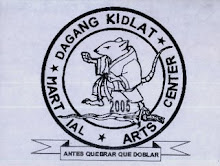
Founder/Teachers:
- GM Benjamin Luna Lema (LSAI)
- Master Ronald Ramirez (Iron Vikings)
Instructors:
- Master Jose Antonio "The Dagger" Ogardo (Chief Instructor)
- Master Eugenio "The Thunder" Ogardo, Jr. (Asst. Instructor)
Members:
- Mr. Emmanuel P. Viscaya (brown)
- Mr. Edgardo P. Brillo (5th Dan)
- Mr. Rey Z. Zaboco (brown)
- Mr. Arly Dela Fuente (brown)
- Mr. Brian J. Abuel (brown)
- Mr. Roumjette D. Calub (brown)
- Mr. Ariz Severino V. Convalecer (7th Dan)
- Mr. Michael Lawrence R. Panlilio (brown)
- Mr. Raphael Louis R. Panlilio (Master - Red Belter) (updated)
- Ms. Deriza Marie P. Quintana (brown)
- Mr. Jonathan Antonio (brown) (blacklisted)
- Mr. Vic De Vera (brown)
- Mr. Michael Lawrence R. Panlilio (brown)
- Mr. Raphael Louis R. Panlilio (Master - Red Belter) (updated)
- Ms. Deriza Marie P. Quintana (brown)
- Mr. Jonathan Antonio (brown) (blacklisted)
- Mr. Vic De Vera (brown)
(Note: My other students that are not included in this list have expressed a wish to remain unknown for now. To all who are unfamiliar in the Filipino ranking system, the red belt is the highest rank that can be given to any practitioner of the Filipino martial arts.)









